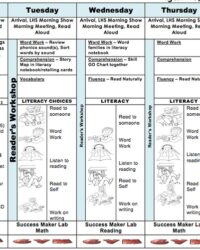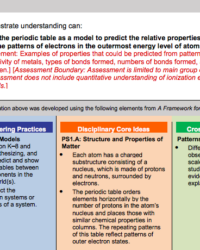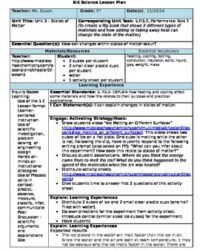Ever wonder how to make your lessons truly stick with students, moving beyond rote memorization to genuine understanding and application? Crafting engaging and effective learning experiences is a challenge many educators face, especially when trying to foster critical thinking and problem-solving skills. Traditional lesson plans often focus on content delivery, but what if there was a framework designed specifically to guide students through a journey of discovery?
That’s precisely where the 5E instructional model comes into its own, providing a structured yet flexible approach to teaching science, but applicable across various subjects. Utilizing a five e model lesson plan template can transform your classroom, encouraging students to actively participate in their learning process, from initial curiosity to sophisticated mastery. It’s about building knowledge step-by-step, ensuring that each concept is not just taught, but truly absorbed and understood.
Unpacking the Five E Model: A Journey of Discovery
The 5E instructional model is much more than just a sequence of activities; it’s a pedagogical framework built on constructivist learning theory. This theory posits that learners construct their own understanding and knowledge of the world, through experiencing things and reflecting on those experiences. The 5E model provides a roadmap for teachers to guide students through this construction process, ensuring a deep, meaningful, and lasting grasp of concepts. It’s particularly powerful because it acknowledges that learning isn’t a passive reception of facts, but an active engagement with ideas and phenomena.
Engage
The first ‘E’ stands for Engage. This is your chance to hook the students, to pique their curiosity and connect the lesson to their prior knowledge or experiences. The goal here isn’t to teach content, but to get students thinking, wondering, and asking questions. Activities might include a captivating demonstration, a thought-provoking question, a real-world problem, or even a short, intriguing video. You’re trying to create a mental “disequilibrium” – making them realize there’s something new or interesting to learn.
Explore
Following Engagement, students move into the Explore phase. Here, they actively investigate the concept through hands-on activities, experiments, observations, or problem-solving tasks. The teacher acts as a facilitator, providing materials and guidance but allowing students to discover relationships, patterns, and answers on their own. This active exploration is crucial for building foundational understanding and for students to truly “own” their learning. It’s a time for them to grapple with ideas and collect data, paving the way for later explanation.
Explain
The Explain phase is where students articulate their understanding and the teacher formally introduces concepts, definitions, and explanations. This isn’t just a lecture; it’s a collaborative process where students share what they’ve learned during the Explore phase, and the teacher clarifies misconceptions, provides scientific terms, and deepens their conceptual understanding. This stage links the students’ experiences with academic language and established knowledge, ensuring they can clearly communicate what they’ve discovered.
Elaborate
Once explanations are clear, students move to Elaborate. This phase encourages them to apply their new knowledge to new situations, extending their understanding and demonstrating their mastery. Activities might involve solving more complex problems, conducting further investigations, designing experiments, or creating presentations. The Elaborate stage pushes students to think critically and generalize their learning beyond the initial context, solidifying their grasp of the concept and demonstrating its relevance.
Evaluate
Finally, the Evaluate phase allows both teachers and students to assess understanding. This isn’t just about traditional tests; it can involve observations, rubrics, portfolios, concept maps, or student self-reflection. The purpose is to determine how well students have grasped the concepts and skills introduced throughout the lesson. It provides valuable feedback for both the learner, showing them where they stand, and the teacher, informing future instructional decisions.
Why Embrace a 5E Lesson Plan Template?
Adopting a 5E lesson plan template isn’t just about following a trend; it’s about embracing a pedagogical approach proven to foster deeper learning and engagement. This structured framework encourages a student-centered environment where curiosity is nurtured, exploration is celebrated, and understanding is actively constructed. It moves away from passive learning, empowering students to take ownership of their educational journey, which is invaluable for developing lifelong learners.
One of the most significant advantages of using this model is its ability to cater to diverse learning styles. The cyclical nature, moving from active engagement and exploration to conceptual explanation and application, ensures that students encounter information in multiple ways. This repetition, but through varied activities, strengthens neural pathways and solidifies understanding, making complex topics more accessible and memorable for a wider range of learners.
Key Advantages:
- Encourages critical thinking and problem-solving skills.
- Fosters active participation and reduces passive learning.
- Helps students build connections between new information and prior knowledge.
- Promotes collaboration and communication among students.
- Provides a clear, logical flow for teachers to plan effective lessons.
Furthermore, a well-crafted five e model lesson plan template simplifies the planning process for educators. By outlining clear objectives and suggesting activities for each stage, it provides a comprehensive guide that ensures all necessary components for effective instruction are included. This not only saves time but also guarantees a consistent and high-quality learning experience for every student, every time.
Implementing the 5E model can profoundly impact student learning, transforming classrooms into dynamic spaces where inquiry thrives and knowledge is built collaboratively. This structured yet flexible approach ensures that learning is not just about memorizing facts, but about truly understanding concepts and being able to apply them in meaningful ways. By guiding students through each distinct phase, educators can foster a lasting love for learning and equip them with essential skills for the future.
Ultimately, embracing this model means committing to a teaching philosophy that values discovery, conceptual understanding, and active participation over mere content delivery. It’s an investment in cultivating inquisitive minds and empowering students to become independent thinkers who are well-prepared for any challenge they encounter, both inside and outside the classroom.


